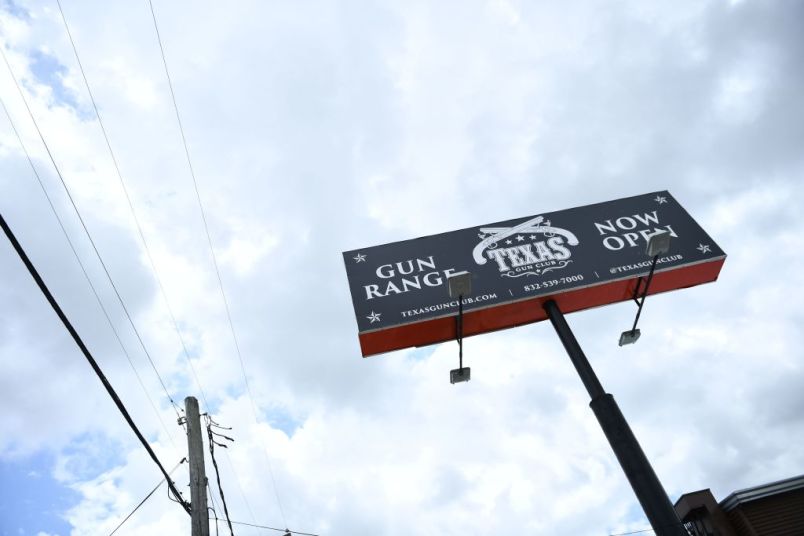AUSTIN, Texas (AP) — Texas schools have been adding metal detectors and armed personnel in an effort to improve campus security in response to the deadly May attack at a Houston-area high school that left eight students and two teachers dead.
Among the steps that Texas apparently won’t be taking anytime soon is tightening restrictions on gun access for people deemed dangerous to themselves or others.
In the aftermath of the May 18 attack at Santa Fe High School, Republican Gov. Greg Abbott suggested that Texas should look for ways to keep guns away from people who pose “an immediate danger to others,” which is the point of so-called red flag laws like those passed by six states since the February massacre at a high school in Parkland, Florida.
But faced with criticism from gun enthusiasts in the country’s largest conservative state, Abbott, who gets top ratings from the National Rifle Association, later clarified that he was only suggesting such laws be part of a broader conversation about school security and that he thinks there’s growing opposition to the idea of gun restrictions.
Lt. Gov. Dan Patrick, who presides over the Texas Senate, was even more forceful.
“I have never supported these policies, nor has the majority of the Texas Senate,” he said minutes after the last in a series of state Senate hearings on gun violence.
The one-two punch by the state’s top Republicans drew cheers from gun rights advocates in a state that has more than 1.2 million handgun license holders and allows the open carry in public of handguns and long rifles.
While they vary from state to state, red flag laws generally allow law enforcement or family members to ask a judge to order the seizure or surrender of guns from someone who is deemed dangerous, often because of mental health concerns or threats of violence. About a dozen states have red flag laws, including Republican-led Florida, which passed its law following the Parkland school attack.
Texas can deny a handgun license based on a person’s mental health history, but that restriction applies to the license to carry a handgun, not buying one. The state can seize weapons from people determined to be in a mental crisis in some circumstances.
Some gun rights activists worry that expanding red flag laws would allow the government to seize someone’s guns based on the suspicion of a threat or a false report without that person having acted violently.
“Red flag laws are nothing more than ways to take guns out of the hands of law-abiding persons on nothing more than mere suspicion,” said C.J. Grisham, leader of gun rights group Open Carry Texas, which has pushed to reduce gun restrictions for years. “You never get good policy when you base it off of emotion.”
Abbott’s suggestion after the Santa Fe attack that Texas should consider keeping guns away from people who pose an immediate danger to others surprised many because neither he nor any of the state’s Republican leaders even suggested tightening gun laws after last November’s massacre at a church in Sutherland Springs, near San Antonio.
Police said the teenage suspect in the Santa Fe shooting took his father’s weapons and that there hadn’t been any prior reports that he may have been mentally ill. But a red flag law might have helped in the church shooting. The Air Force failed to properly notify federal law enforcement agencies of the gunman’s previous felony domestic violence conviction and the gunman had spent time at a mental health hospital in New Mexico.
Shortly after the Santa Fe school shooting, Abbott held meetings with law enforcement officials, educators, mental health experts, attack survivors and victims’ family members. A gun control group, Texas Gun Sense, got a seat next to the governor. On his other side was the Texas State Rifle Association, the state arm of the NRA.
Few expected major gun control proposals. But after years of watching Texas lawmakers make it easier and cheaper to get a handgun license and carry weapons in public, gun control advocates felt like finally they had a foot in the door, only to get it crushed again.
Advocates for red flag laws say they can help prevent violence before it starts, unlike armed teachers and school marshals, who can react after an attack has already begun. Abbott’s 43-page school safety and gun violence plan focused on getting more armed guards and personnel on campus, improving gun storage safety laws and boosting mental health screenings.
“It’s been a wave in other states, even with Republican governors. But not Texas,” said Gyl Switzer, executive director of Texas Gun Sense. “What keeps me up at night is worrying that there will be another situation. I don’t want us to have to learn from another really sad situation.”
Soon after Abbott called for the conversation on red flag laws, the state Republican Party’s convention platform in June specifically opposed them. The issue drew strong opposition at the legislative hearings. In his speech to the state GOP convention, Abbott promised he would protect gun rights.
“The people of Sutherland Springs, they looked me in the eye and they insisted, they said, ‘Governor, do not let them use this to take away our guns,'” Abbott said.
The retreat was to be expected, said Cal Jillson, political science professor at Southern Methodist University.
“It is remarkable how consistent the playbook is in red states. Let time pass, let attention pass, then declare that current law has this under control,” Jillson said. “That’s the normal playbook and that’s what we saw here.”
___
Follow Jim Vertuno on Twitter: https://twitter.com/jimvertuno



